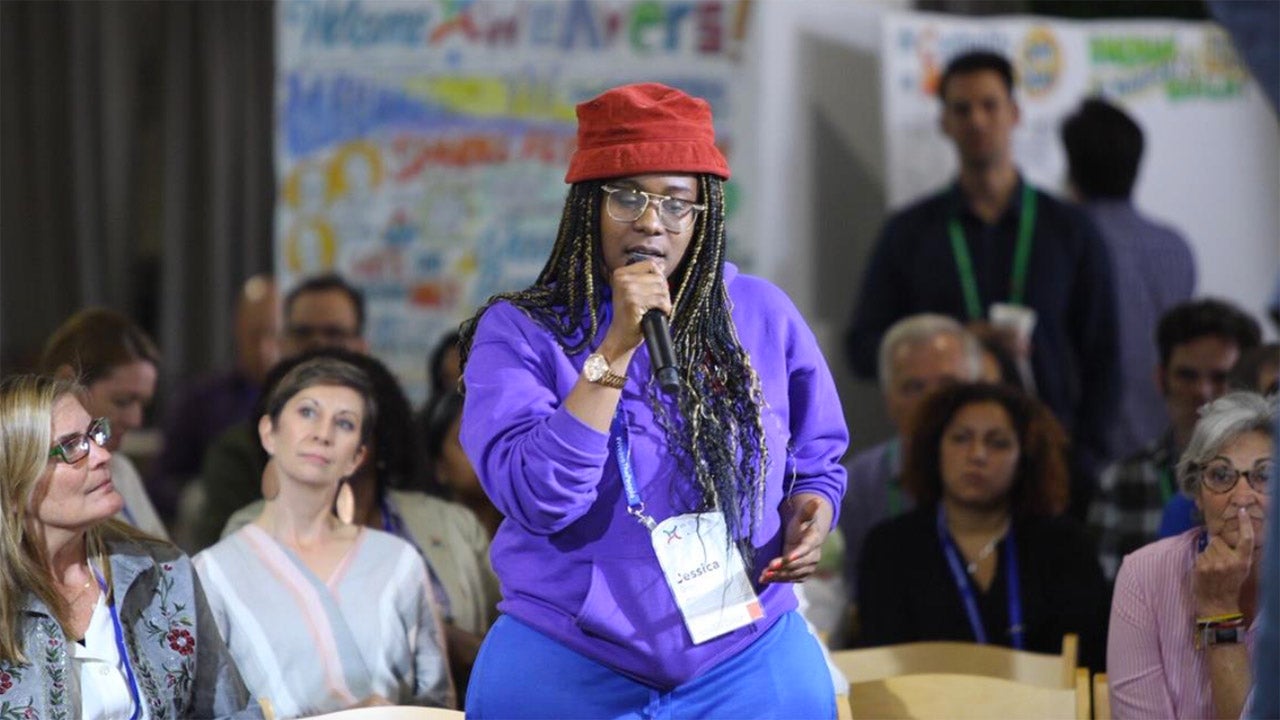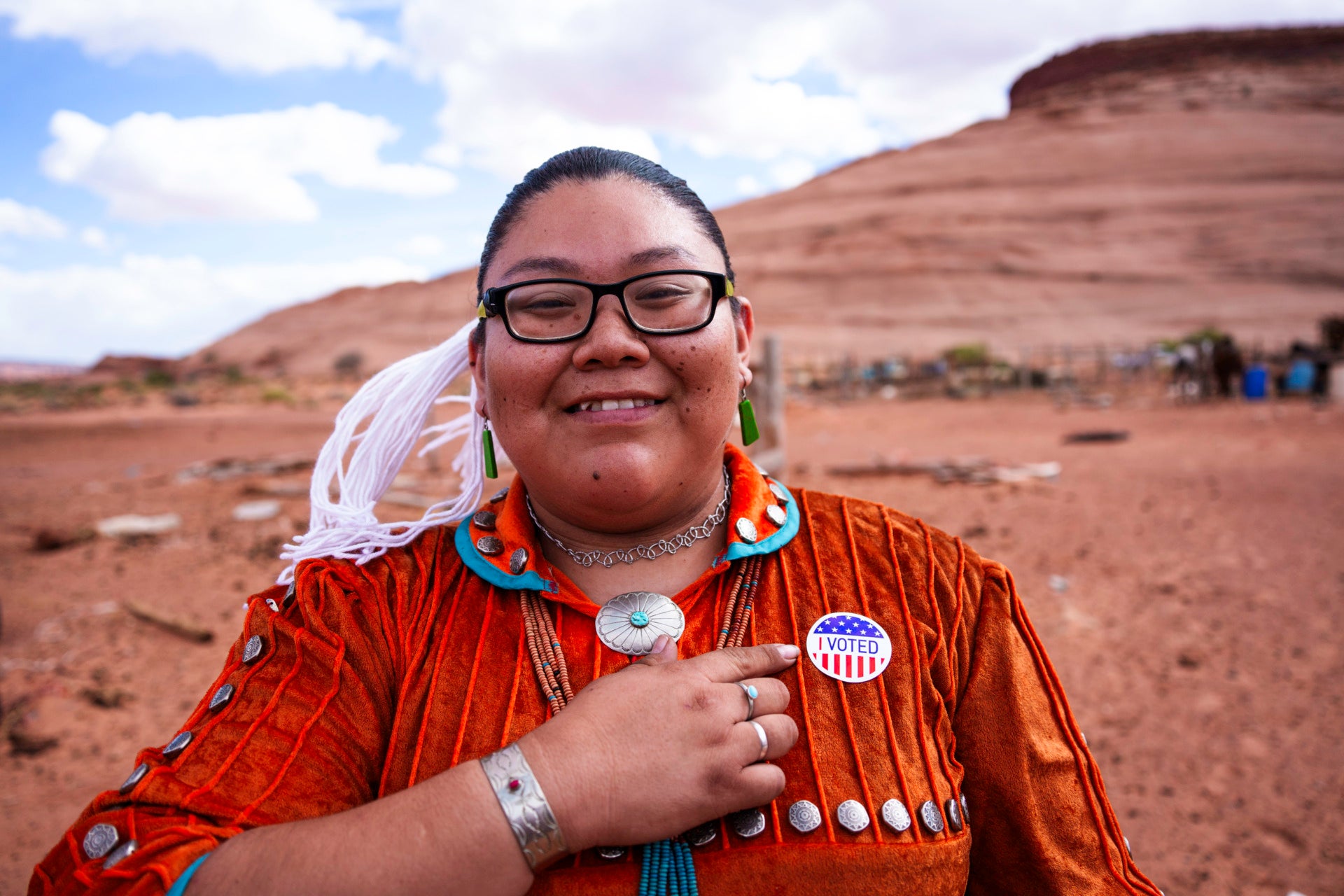#WeaveThePeople gathered 250 people from around the country who are healing America’s social fragmentation by weaving deep connections across difference in their communities. The three days of conversation offered a lot to take in — you can watch full videos of every session on the event page — but here are five lessons you can learn from weavers in attendance.
Listen to your body
Dylan Tete discusses his defining moment of recognizing how trauma affected his way to process emotions. #WeaveThePeoplehttps://t.co/BV35X657l1 pic.twitter.com/aKwVoL426T
— The Aspen Institute (@AspenInstitute) May 15, 2019
To survive on the battlefield, the Army teaches soldiers like Dylan Tete how to ignore pain. When he left Iraq and moved with his family to New Orleans just before hurricane Katrina, Dylan relied on that same training for his next battle, building FEMA housing in devastated communities.
When he found himself struggling to connect to the pain of his fellow community members, it became clear that his training was now working against him. “I had effectively turned this body off in order to survive again,” he said. This led Dylan down path of a crippling sense of isolation, and it wasn’t until finally seeking treatment at the VA when he “learned how to turn this body on.” There is a whole set of tools on the table for healing trauma.
Built-in oppression can be hard to recognize
“Oppression is real. It's a structural part of our country & it's history. It was created intentionally…we need more people to step outside their comfort zone & expose themselves to different cultures, communities & perspectives.” -Jahmal Cole of @mbmhmc #WeaveThePeople pic.twitter.com/wbRuIJUnsb
— The Aspen Institute (@AspenInstitute) May 14, 2019
During a conversation centered on “The Centrality of Race,” audience member Jahmal Cole spoke up to point out the myriad insidious ways that oppression in America infiltrates communities of those being oppressed. Cole is the founder and CEO of My Block, My Hood, My City, a nonprofit that takes groups of low-income teenagers from Chicago on ‘Explorations’ around the city to experience what goes on in neighborhoods, workplaces, and urban areas outside their own.
Cole listed for the audience some the ways that systems of oppression infiltrate daily life in his community, ways that insiders now come to expect as simply a part of life. He told the circle of weavers about drug-sniffing dogs on subways, police helicopters flying regularly over neighborhoods at night, cashiers working from behind bulletproof glass, not having any banks or grocery stores in a community, and having metal detectors and paddy wagons in the front of schools — which are underfunded and desperately lacking resources. For young people in Chicago, all of this is simply a part of their everyday life, but those outside may not even notice. “The integrity of this country is at risk,” Cole said, “because people don’t know what injustice looks like.”
Real citizenship means showing up for your community
.@ericpliu talks about what strong citizenship really means. Bottom line: It’s more about your contribution to community than your documentation status. #WeaveThePeople https://t.co/BV35X657l1 pic.twitter.com/3bLxpnp3j1
— The Aspen Institute (@AspenInstitute) May 15, 2019
For Eric Liu, executive director of the Aspen Institute Citizenship and American Identity Program, the real definition of citizenship has nothing to do with someone’s immigration status. Liu spoke as part of a discussion titled “How To Rebuild Civic Bonds.” Liu’s organization, Citizens University, works to “build a culture of powerful and responsible citizenship in the United States.”
Rather than consider citizenship through the lens of the immigration and naturalization laws and policies of this country, Liu and his organization consider citizenship to mean “the deeper ethical sense [of being] members of a body, contributors to community, voices in the choir.”
Data alone can’t capture community wellbeing
.@katiecouric asks @mrs_englewood how she measures success in her community of Englewood, Chicago. #WeaveThePeople https://t.co/BV35X657l1 pic.twitter.com/HztxEv35A6
— The Aspen Institute (@AspenInstitute) May 15, 2019
People often ask community leader Asiaha Butler how she could still live in her hometown of Englewood, Chicago. In fact, Asiaha nearly moved away because of the area’s high crime rate. It was when she witnessed children playing with broken bottles across the street that she decided she couldn’t become yet another person to turn their back on Englewood.
Instead, Asiaha founded the Resident Association of Greater Englewood. She describes their mission as “community development of the mind,” that calls upon the “passion of people” to better the Englewood community. Success, she said, can’t always be quantified, but it can be felt: “There’s a spirit, there’s a culture that’s been shifted.”
You can’t make change without building trust
“Why don’t we see, in a low income parent, the very same love, commitment, and potential we so easily recognize in the parents in this room?” -Alejandro Gibes de Gac
Tune in live: https://t.co/BV35X657l1 #WeaveThePeople pic.twitter.com/DlZt9bAaQe— The Aspen Institute (@AspenInstitute) May 16, 2019
On the final day of #WeaveThePeople, Alejandro Gibes de Gac told attendees about his plan for closing the achievement gap between low- and middle-income students. Gibes de Gac is the founder and CEO of the Springboard Collaborative, a non-profit organization that provides training for parents and teachers in low-income communities to enable them to guarantee their students’ success.
He focused on the experience and sacrifice of immigrant parents, including his own: parents who make unimaginable sacrifices to bring their children to the United States in search of better educational opportunity. These are parents who are willing to do anything for their children, “and yet, our schools and our systems treat these families as liabilities, rather than assets.” To Gibs de Gac, the problem lies in a lack of understanding and trust between parents and teachers. Low-income parents, like all parents, want the best for their children and want to do whatever they can to make their children as high-achieving as possible. Too often they don’t know how they can help, and schools and teachers they interact with don’t make them feel comfortable asking for help. In Gibes de Gac’s view, “the necessary precursor to collaboration is trust.”


